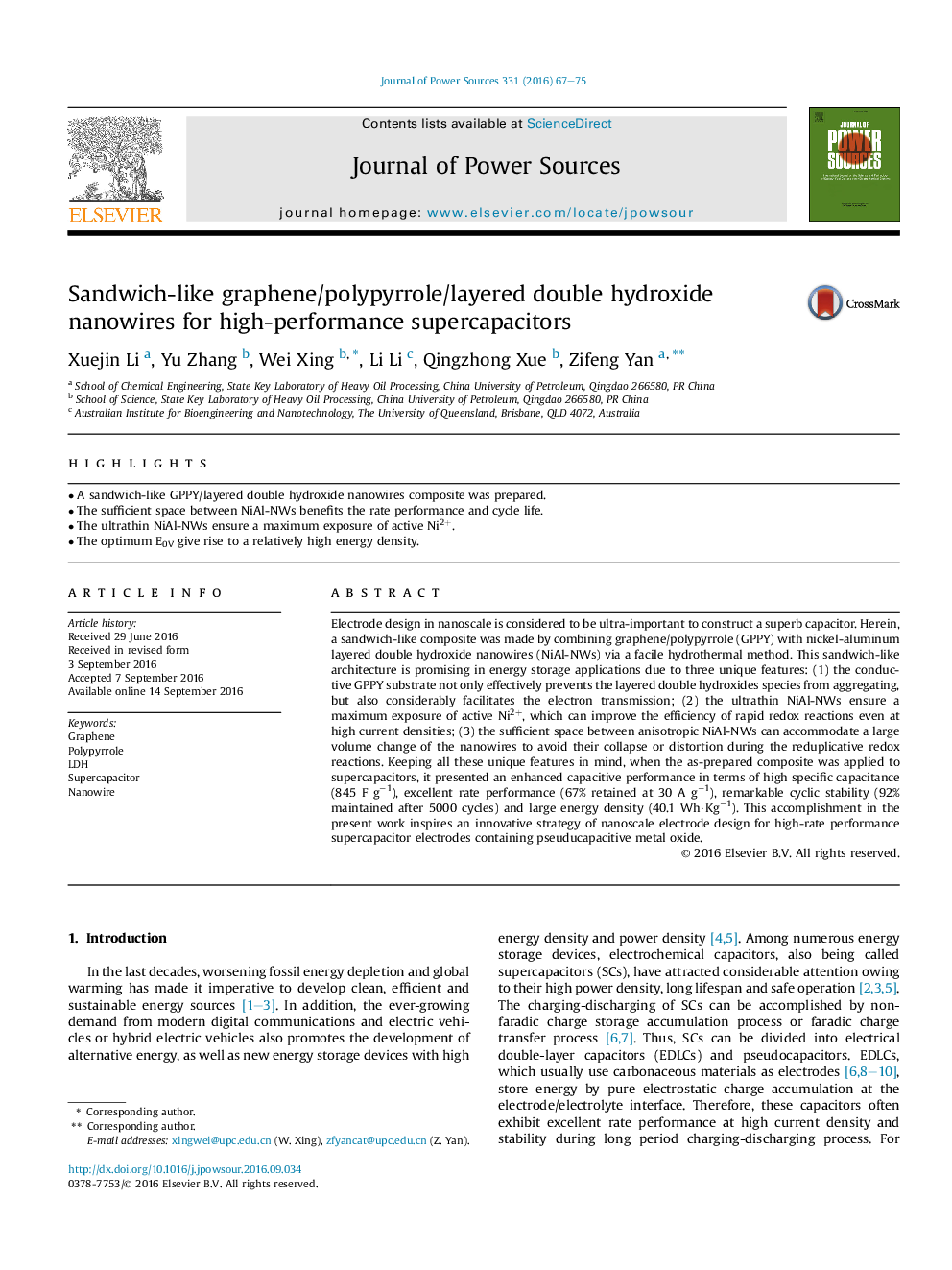| Article ID | Journal | Published Year | Pages | File Type |
|---|---|---|---|---|
| 5150211 | Journal of Power Sources | 2016 | 9 Pages |
Abstract
Electrode design in nanoscale is considered to be ultra-important to construct a superb capacitor. Herein, a sandwich-like composite was made by combining graphene/polypyrrole (GPPY) with nickel-aluminum layered double hydroxide nanowires (NiAl-NWs) via a facile hydrothermal method. This sandwich-like architecture is promising in energy storage applications due to three unique features: (1) the conductive GPPY substrate not only effectively prevents the layered double hydroxides species from aggregating, but also considerably facilitates the electron transmission; (2) the ultrathin NiAl-NWs ensure a maximum exposure of active Ni2+, which can improve the efficiency of rapid redox reactions even at high current densities; (3) the sufficient space between anisotropic NiAl-NWs can accommodate a large volume change of the nanowires to avoid their collapse or distortion during the reduplicative redox reactions. Keeping all these unique features in mind, when the as-prepared composite was applied to supercapacitors, it presented an enhanced capacitive performance in terms of high specific capacitance (845 F gâ1), excellent rate performance (67% retained at 30 A gâ1), remarkable cyclic stability (92% maintained after 5000 cycles) and large energy density (40.1 Wh·Kgâ1). This accomplishment in the present work inspires an innovative strategy of nanoscale electrode design for high-rate performance supercapacitor electrodes containing pseuducapacitive metal oxide.
Related Topics
Physical Sciences and Engineering
Chemistry
Electrochemistry
Authors
Xuejin Li, Yu Zhang, Wei Xing, Li Li, Qingzhong Xue, Zifeng Yan,
